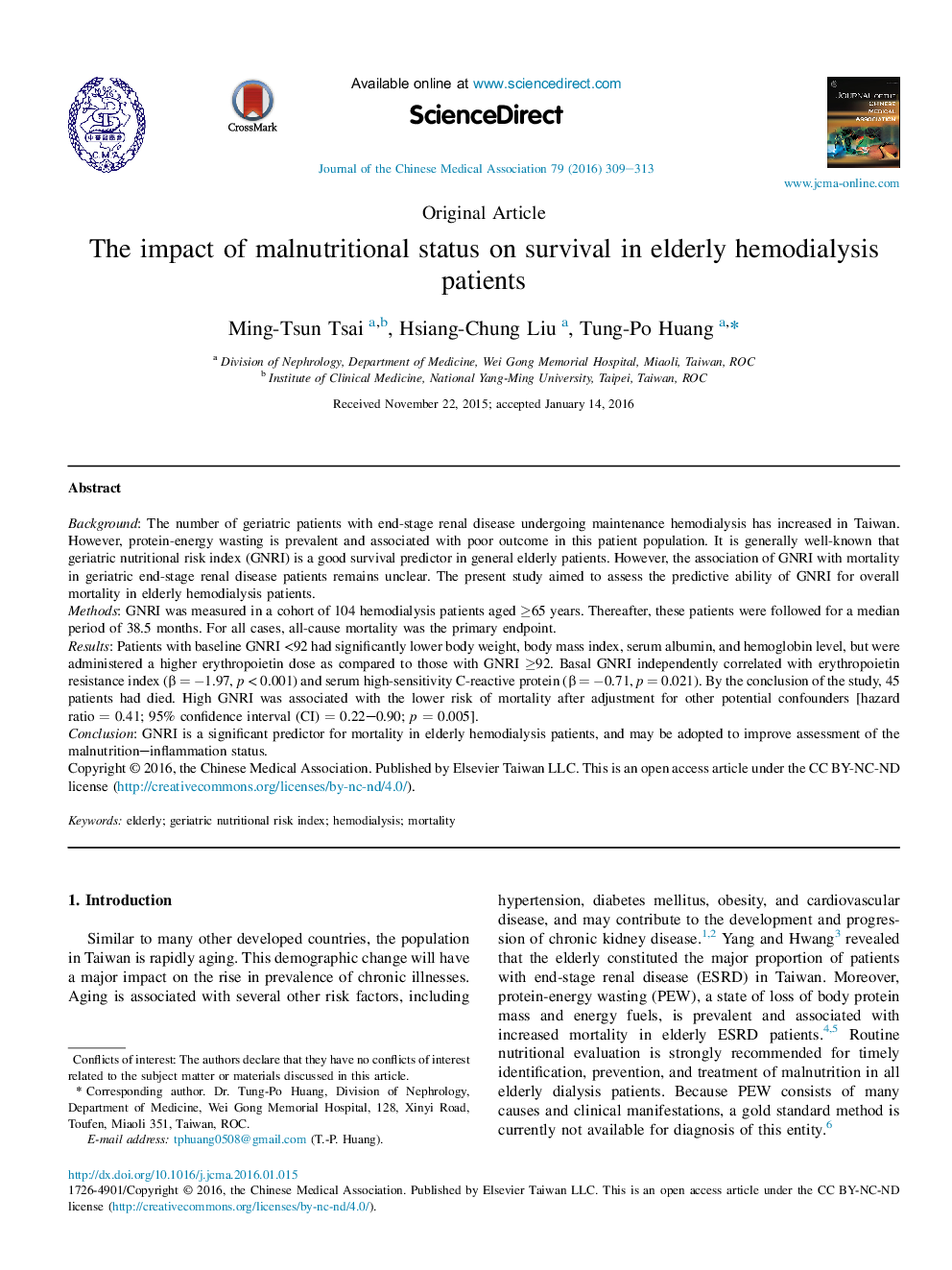| Article ID | Journal | Published Year | Pages | File Type |
|---|---|---|---|---|
| 3475743 | Journal of the Chinese Medical Association | 2016 | 5 Pages |
BackgroundThe number of geriatric patients with end-stage renal disease undergoing maintenance hemodialysis has increased in Taiwan. However, protein-energy wasting is prevalent and associated with poor outcome in this patient population. It is generally well-known that geriatric nutritional risk index (GNRI) is a good survival predictor in general elderly patients. However, the association of GNRI with mortality in geriatric end-stage renal disease patients remains unclear. The present study aimed to assess the predictive ability of GNRI for overall mortality in elderly hemodialysis patients.MethodsGNRI was measured in a cohort of 104 hemodialysis patients aged ≥65 years. Thereafter, these patients were followed for a median period of 38.5 months. For all cases, all-cause mortality was the primary endpoint.ResultsPatients with baseline GNRI <92 had significantly lower body weight, body mass index, serum albumin, and hemoglobin level, but were administered a higher erythropoietin dose as compared to those with GNRI ≥92. Basal GNRI independently correlated with erythropoietin resistance index (β = −1.97, p < 0.001) and serum high-sensitivity C-reactive protein (β = −0.71, p = 0.021). By the conclusion of the study, 45 patients had died. High GNRI was associated with the lower risk of mortality after adjustment for other potential confounders [hazard ratio = 0.41; 95% confidence interval (CI) = 0.22–0.90; p = 0.005].ConclusionGNRI is a significant predictor for mortality in elderly hemodialysis patients, and may be adopted to improve assessment of the malnutrition–inflammation status.
